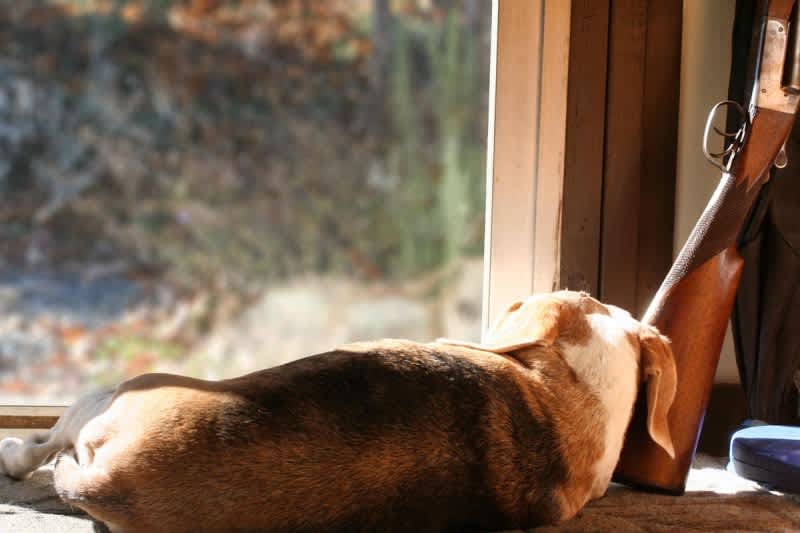What the Federal Shutdown Means to Hunters: Frustration During Peak Hunting Months
OutdoorHub Reporters 10.09.13

The federal government’s partial shutdown is now well into its second week and politicians are still scrambling for a resolution. The shutdown’s effects on sportsmen during the year’s peak hunting months vary. For hunters using (or planning to use) still-open public and state lands, the effect is likely marginal. If a hunter expects to pursue game in any federally-managed area now closed, especially a National Wildlife Refuge, he or she might be plumb out of luck.
“There are 561 national wildlife refuges across the country. Of those, 329 are open for hunting and 271 have fishing. These are all closed,” Desiree Sorenson-Groves, vice president of government affairs for the National Wildlife Refuge Association, told OutdoorHub.
According to Sorenson-Groves, 2.5 million hunters and seven million anglers visit wildlife refuges annually. When the shutdown began last week, US Fish and Wildlife Service (USFWS) employees began barricading areas now closed off to hunters. Even areas jointly run by state and federal agencies, such as Wisconsin’s Chequamegon-Nicolet National Forest, were under threat of closure. In the case of the Chequamegon-Nicolet, the Wisconsin Department of Natural Resources managed to make a deal that would keep the forest open for hunting. Other places were not as fortunate.
Just across from the Rocky Mountain Elk Foundation’s (RMEF) Missoula, Montana headquarters, the Lee Metcalf National Refuge closed down. Signs now hang from its shut gates and its website currently redirects to the Department of the Interior.
“There’s a refuge down the road from here where I know a lot of people hunt for ducks,” RMEF’s Mark Holyoak said over the phone. “That’s closed, and they’re not very happy about it.”
Holyoak continues that while there might not be a large outcry from hunters now, that may change as the shutdown continues. The blame is not directed at the USFWS, which has been cut down to a fraction of its workforce. Most refuges now only hold a handful of active employees tasked with keeping their facilities operating.
“I have furloughed 25 of 30 employees here; I can’t answer the phones. I have five employees securing 1.1. million acres and 670 miles of road. It’s physically impossible to close the whole refuge,” Rick Potts, manager for the Charles M. Russell Wildlife Refuge in central Montana, told the Lewistown News-Argus.
Elsewhere across the country the situation was similiar. The USFWS was forced to retain only essential personnel, which usually amounted to security and maintenance. Other fundamental tasks involved with taking care of public lands are simply not being performed.
“These are some of the most highly managed lands in the United States,” Sorenson-Groves said.
They are also economically vital to the well-being of the communities around them. According to the Lewistwon News-Argus, experts believe the communities that depend on national parks, forests, and refuges will lose upwards of $30 million per day as long as the shutdown is in effect. Many small towns such as the ones that border Yellowstone and Grand Canyon National Park are struggling to make ends meet as tourism dries up. Other communities depend on hunting as their lifeline.
“It’s not just the hunters impacted by this, it’s also the outfitters,” Sorenson-Groves said. “If you’re anywhere in the Lower 48 you’re probably going to have to get someone take you onto the refuge for a quality experience, because you’re not familiar with the area. This time of the year is very important to outfitters for their bottom line. It’s like Christmas for Macy’s, it’s when they make all their money.”
Like a chain of dominoes the outfitters, hunting supply stores, restaurants, and hotels are all affected by the shutdown. What about hunters themselves? Could they simply relocate their hunt to state-governed lands? For many, it is just not that simple.
“As [it’s] October, this is obviously the biggest month for hunting around the country,” Sorenson-Groves said. “You have everything from waterfowl to big game [to] hunt like deer, elk, pronghorn, black bear and brown bear, upland game, and small game.”
Some of those are rare and unique hunts that take place on what is now closed public land.
“You wait in a lottery for a tag and it’s a once-in-a-lifetime tag, whether it’s for pronghorn, antelope, or bighorn,” Sorenson-Groves continued. “There are very few tags issued every year […] people may wait years and pay upwards of tens of thousands of dollars of these hunts. People come from all around the world for these hunts. Right now these are on hold.”
Hunters who managed to get their hands on these rare oppuntities are now left playing the waiting game, or worse.
“In Colorado, hunters who’ve waited 12 years to hunt elk are being forced to turn in their tags,” Gaspar Perricone, co-director of the Bull Moose Sportsmen’s Alliance, told AFP.
It is a heartbreaking realization for many hunters, as well as the multitude of travelers who have to put off long-planned trips until the shutdown ends. When it does, experts predict that federal employees will be putting in long hours to get things up and running again. Sorenson-Groves says it will not be a matter of weeks before the refuges are reopened to the public; the gates will open as soon as the shutdown ends.
“They want to get back to work,” she says. “This is their career, and in the USFWS they are passionate about their jobs.”
Read our article on how the shutdown affects anglers here.

